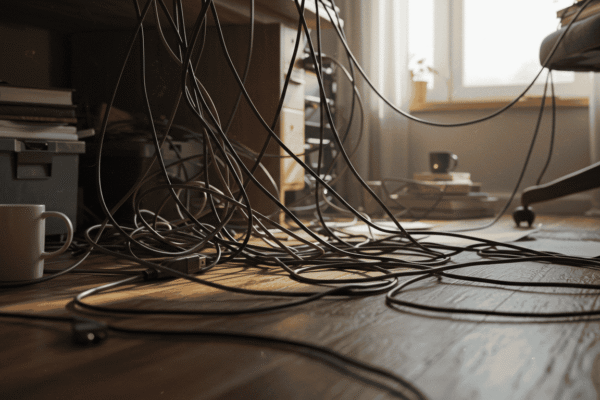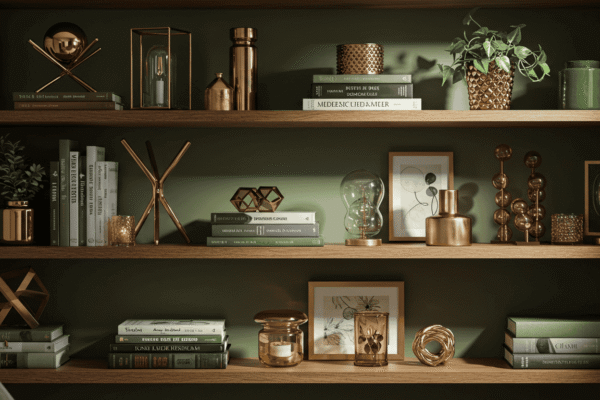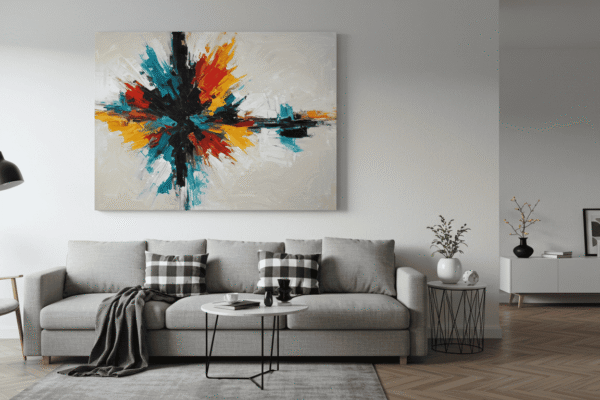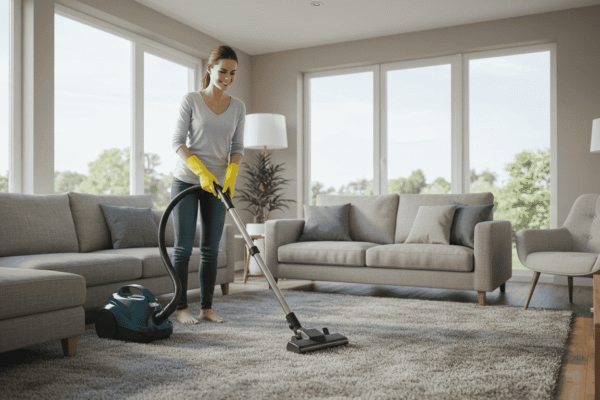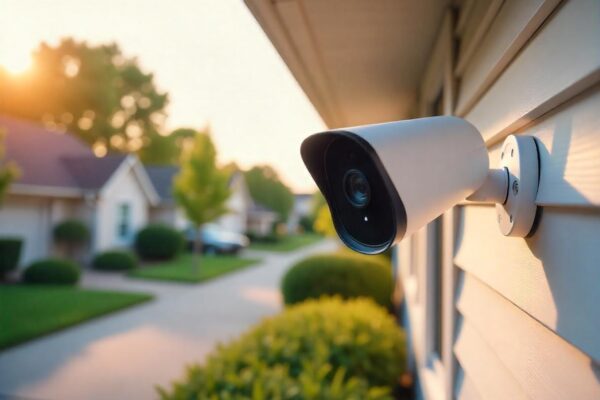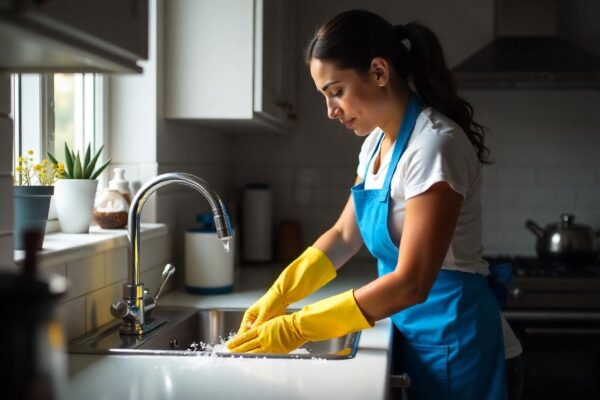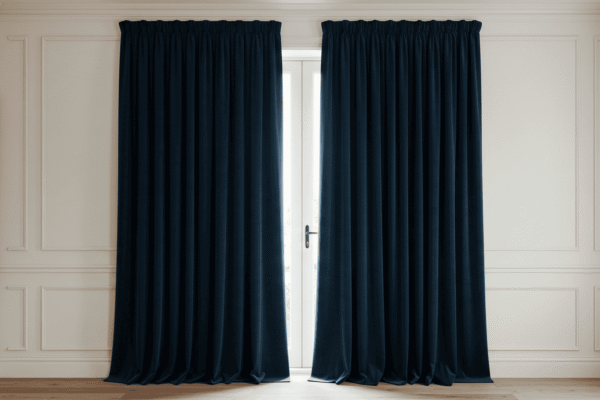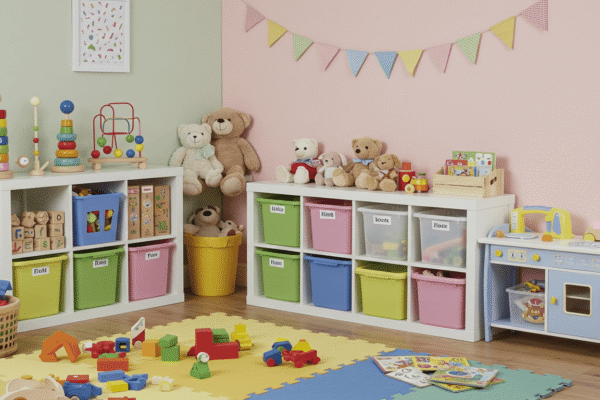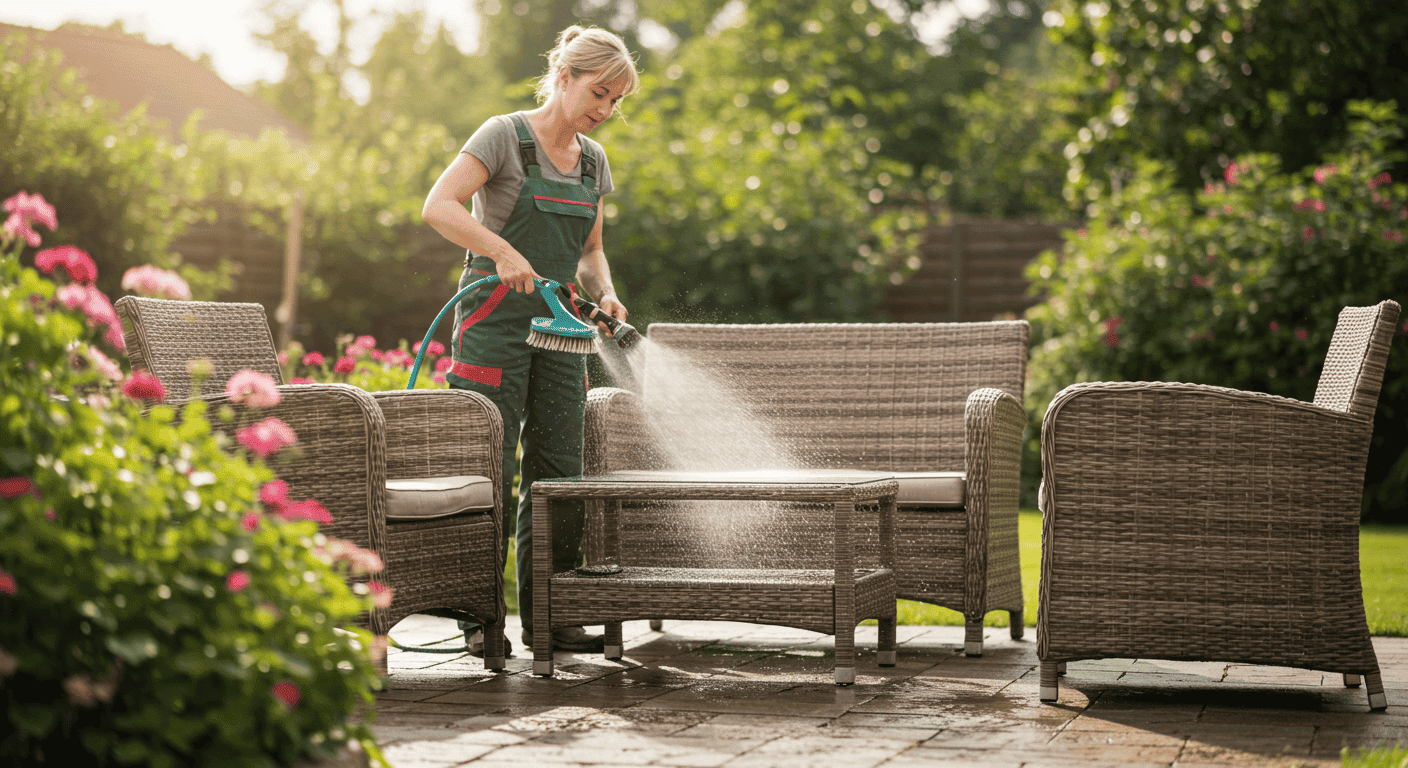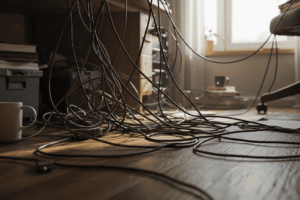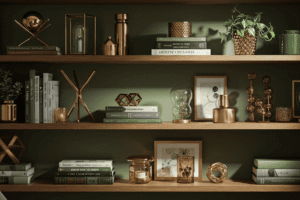Cleaning outdoor furniture is essential to keep your patio, deck, or garden area looking fresh and inviting throughout the year. As the seasons change, dirt, pollen, mildew, and weather wear can quickly take a toll on your outdoor pieces. Knowing the best methods for cleaning outdoor furniture not only restores its beauty but also extends its lifespan. In this guide, you’ll discover practical, easy-to-follow tips tailored for different materials, helping you maintain your furniture with confidence and care this season.
Understanding Your Outdoor Furniture Materials
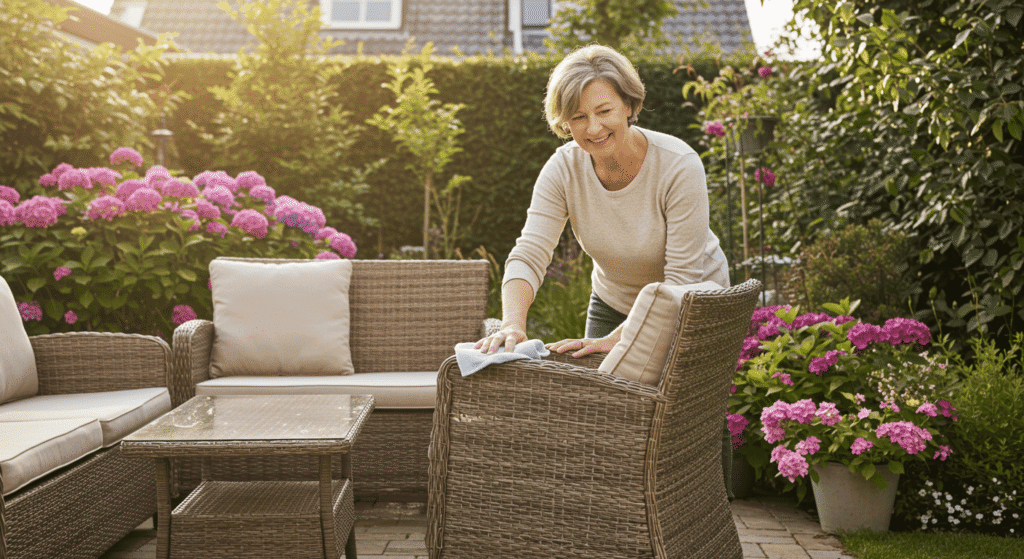
Before diving into cleaning outdoor furniture, it’s important to understand the types of materials your pieces are made from. Outdoor furniture comes in various forms—each with its own unique characteristics and care requirements. Identifying your furniture material helps you choose the most effective and safe cleaning methods, ensuring you protect your investment and keep it looking great for years to come.
Common Types of Outdoor Furniture Materials
Outdoor furniture typically falls into several main categories: wood, metal, plastic, wicker/rattan, and fabric cushions. Each material has strengths and vulnerabilities:
- Wood is classic and durable but can be prone to weathering, warping, or mildew if not properly maintained.
- Metal furniture, often made from aluminum or wrought iron, is sturdy but may develop rust spots or lose its finish over time.
- Plastic and resin furniture are lightweight and weather-resistant, but they can discolor or crack under harsh sunlight.
- Wicker or rattan offers a natural, textured look but may become brittle or moldy if exposed to moisture.
- Fabric cushions add comfort but can easily attract dirt, stains, and mildew, requiring careful cleaning and protection.
Why Material Matters for Cleaning
Understanding the material composition of your outdoor furniture is crucial because different materials need different care to avoid damage. Using the wrong cleaning products or techniques can strip finishes, cause discoloration, or weaken structural components. For example, harsh detergents might damage delicate wicker fibers, while abrasive scrubbing can scratch metal surfaces. Tailoring your cleaning approach to each material ensures the best results while preserving the integrity and appearance of your furniture.
Quick Material Care Chart
Here’s a helpful overview to guide your cleaning routine based on your furniture’s material:
| Material | Best Cleaning Method | Common Issues | Maintenance Tip |
|---|---|---|---|
| Wood | Mild soap, vinegar solution, teak oil | Weathering, mildew | Seal with protective oil annually |
| Metal | Baking soda paste, gentle scrubbing | Rust, fading finish | Dry thoroughly after cleaning |
| Plastic/Resin | Soap and water, gentle power wash | Discoloration, cracks | Store out of direct sun when possible |
| Wicker/Rattan | Soft brush, mild detergent | Brittleness, mold | Avoid prolonged moisture exposure |
| Fabric Cushions | Spot clean with mild stain remover | Stains, mildew | Use covers and store cushions indoors |
This chart can serve as a quick reference whenever you need to decide on the right cleaning method or maintenance routine for your outdoor furniture.
Preparing Your Outdoor Furniture for Cleaning
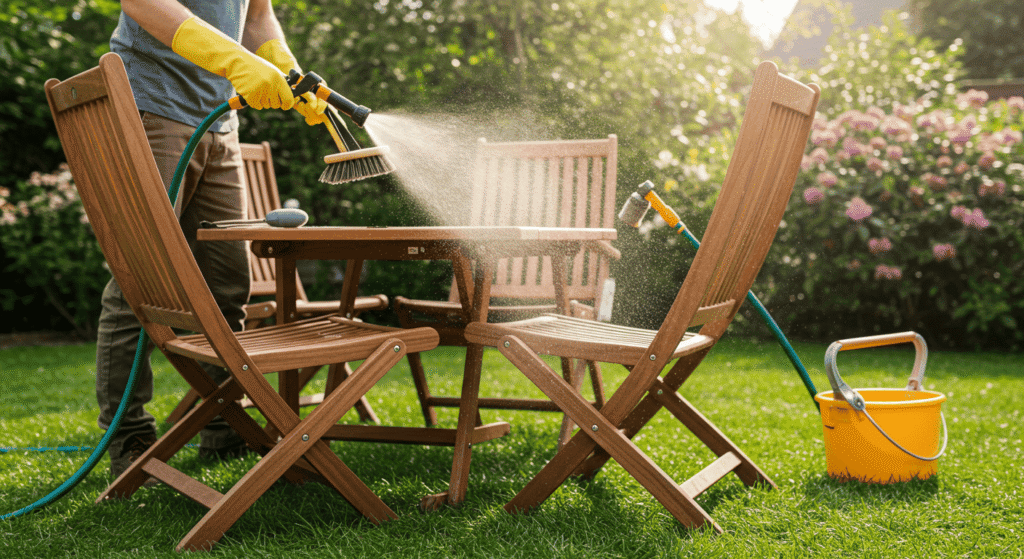
Proper preparation is key to achieving the best results when cleaning outdoor furniture. Taking a few simple steps before you start can make the process easier, more effective, and help protect your furniture from accidental damage.
Essential Tools and Supplies Checklist
Having the right tools and cleaning supplies on hand is essential for tackling dirt, stains, and mildew effectively. Some of the basics you’ll want include:
- Soft brushes for gentle scrubbing without scratching surfaces
- Mild detergents that clean without harsh chemicals
- Vinegar and baking soda as natural, eco-friendly cleaning agents
- Spray bottles for easy application of homemade or commercial solutions
These items cover most cleaning tasks and can be used safely on a variety of materials, ensuring you have everything you need to get started.
Safety Tips and Best Practices
When cleaning, it’s important to prioritize safety to protect yourself and your furniture. Always wear gloves to shield your skin from irritants found in cleaning solutions. Before applying any cleaner to the entire surface, test it on a small, inconspicuous area to check for any adverse reactions like discoloration or damage. This precaution helps you avoid costly mistakes and preserves the look and integrity of your furniture.
Weather Considerations
Choosing the right time to clean your outdoor furniture can improve your results. The best time of day is usually during mild temperatures, avoiding the intense midday sun which can cause cleaning solutions to dry too quickly and leave streaks or residue. Early morning or late afternoon are ideal. As for seasons, spring and early summer are perfect for deep cleaning, preparing your furniture for regular use. Avoid cleaning during very humid or rainy days, as moisture can prevent proper drying and promote mildew growth.
Step-by-Step Cleaning Methods for Each Material
Cleaning your outdoor furniture effectively means using the right techniques tailored to each material. This section breaks down easy-to-follow steps to help you restore your furniture’s appearance while protecting it from damage.
Cleaning Wood Furniture Naturally
Wood furniture brings warmth and charm to any outdoor space but requires gentle care. Start by mixing a mild soap with water to create a gentle cleaning solution. Use a soft brush or cloth to scrub away dirt and grime. For tougher stains or mildew, a vinegar and water solution works well without harming the wood. After cleaning, allow the furniture to dry completely. To maintain and protect the wood, apply a natural oil or wood preservative periodically, which helps prevent cracking and weather damage.
Removing Mildew and Rust from Metal Furniture
Metal furniture is durable but susceptible to rust and mildew, especially in damp environments. Begin by scrubbing the affected areas with a soft brush and a paste made from baking soda and water. This mild abrasive helps lift rust without scratching the metal. Rinse thoroughly and dry the furniture immediately to prevent further corrosion. Regularly drying metal surfaces and using protective coatings can extend their lifespan and keep them looking their best.
Washing Plastic and Resin Furniture
Plastic and resin furniture is relatively low maintenance but can accumulate dirt and stains over time. Use a mixture of mild soap and warm water with a soft sponge or brush to clean all surfaces. For deeper cleaning, a gentle power wash can be effective, but keep the pressure low to avoid cracking or warping the material. Rinse thoroughly and allow the furniture to dry in a shaded area to prevent discoloration from direct sunlight exposure.
Cleaning and Maintaining Outdoor Cushions and Fabrics
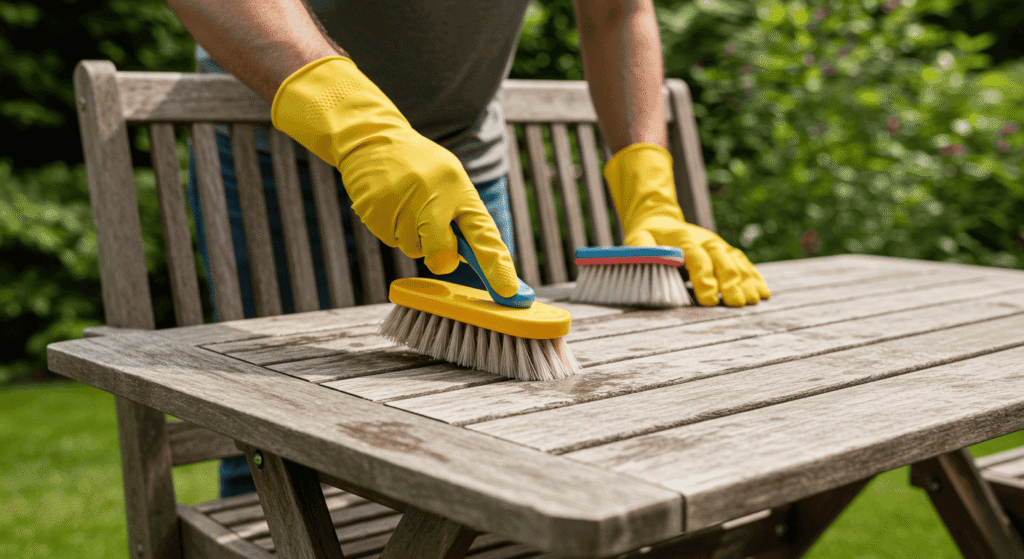
Outdoor cushions and fabrics add comfort and style to your furniture but require careful attention to stay clean and fresh. Proper cleaning and maintenance not only improve appearance but also extend the life of your cushions.
Spot Cleaning Stains Effectively
For quick stain removal, homemade stain removers made from natural ingredients can be very effective. A simple mixture of equal parts white vinegar and water works well on many common stains. Apply the solution to the stained area using a clean cloth, gently blotting rather than rubbing to avoid spreading the stain. Baking soda sprinkled on stubborn spots can help absorb oils and odors before vacuuming or brushing it off. These gentle methods keep fabrics safe while removing unwanted marks.
Deep Cleaning Outdoor Fabrics
For a more thorough clean, removable cushion covers or fabric parts can often be soaked in a mild detergent solution. Use lukewarm water and allow the fabric to soak for 15–30 minutes to loosen dirt and mildew. After soaking, rinse thoroughly with clean water to remove any soap residue. Make sure to air dry the fabric completely in a well-ventilated, shaded area to prevent fading and mildew growth. Avoid direct sunlight during drying to maintain fabric color and integrity.
Tips to Protect and Store Cushions
To prevent mold and mildew, always store cushions in a dry place when not in use, especially during rainy seasons. Using breathable cushion covers can help protect against moisture while allowing airflow. When storing for long periods, keep cushions elevated and avoid plastic bags that trap humidity. Regularly fluffing and airing cushions also helps maintain their shape and freshness. These practices will prolong the life of your outdoor fabrics and keep them looking inviting year-round.
Eco-Friendly Cleaning Solutions for Outdoor Furniture
Choosing eco-friendly cleaning solutions is not only better for your health and the environment but can also help extend the life of your outdoor furniture. Natural products are gentle yet effective, making them an excellent choice for routine maintenance.
Benefits of Natural Cleaning Products
Natural cleaning products reduce your exposure to harsh chemicals that can irritate your skin or respiratory system. They are biodegradable, which means they break down harmlessly and minimize pollution in waterways and soil. Additionally, these gentle cleaners help preserve the finishes and materials of your furniture, preventing damage that some harsh chemicals might cause over time.
DIY Cleaning Recipes
Simple, homemade cleaning solutions can be made from everyday kitchen ingredients. For example, a mixture of equal parts vinegar and water serves as an effective all-purpose cleaner that cuts through grime and mildew. Baking soda can be sprinkled on stubborn stains or mixed into a paste with water to scrub away dirt gently. Adding lemon juice to your cleaning mix adds natural disinfecting power and a fresh scent, while also helping to brighten surfaces.
When to Avoid Harsh Chemicals
While commercial cleaners may promise quick results, they often contain strong chemicals that can weaken or discolor furniture materials. Avoid using bleach, ammonia, or abrasive powders on delicate surfaces like wood or wicker. Harsh chemicals can also harm outdoor fabrics and cushions by breaking down fibers. When in doubt, opt for mild, natural alternatives to protect your furniture and the environment.
How to Use Tools Like Pressure Washers Without Damage
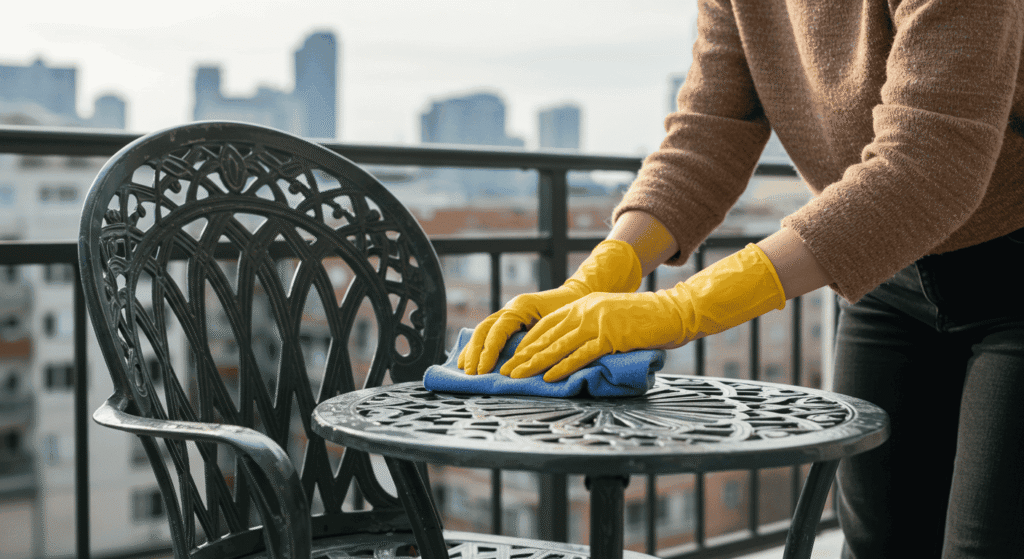
Pressure washers can be powerful allies in cleaning outdoor furniture, but using them incorrectly can cause serious damage. Knowing the right settings and techniques ensures you get a thorough clean while preserving the integrity of your furniture.
Pressure Washer Settings for Different Materials
Each furniture material requires a specific pressure setting to avoid harm. For wood, use a low-pressure setting (around 500-600 psi) to prevent splintering or stripping finishes. Metal can handle slightly higher pressure (up to 1200 psi), but be cautious around painted surfaces to avoid peeling. For plastic or resin furniture, keep pressure low to medium (400-600 psi) to avoid cracks or warping. Always consult your pressure washer’s manual and test on a small hidden area first.
Step-by-Step Pressure Washing Guide
Start by removing cushions and debris from your furniture. Hold the pressure washer wand at least 12-18 inches away from the surface and use a sweeping motion rather than focusing on one spot. Work from top to bottom to rinse away loosened dirt effectively. Avoid using hot water settings unless recommended, as this can damage some materials. After washing, let the furniture air dry in a shaded area to prevent sun damage and warping. Finally, inspect for any remaining stains and spot-clean as needed.
Alternative Cleaning Tools
If you prefer gentler methods or don’t have access to a pressure washer, there are plenty of effective alternatives. Soft-bristle brushes and sponges work well for scrubbing dirt without scratching surfaces. Pair these with eco-friendly cleaning sprays made from natural ingredients like vinegar or baking soda to tackle grime safely. These tools give you control and precision, making them especially useful for delicate or intricately designed furniture pieces.
Seasonal Outdoor Furniture Maintenance Tips
Regular maintenance tailored to the changing seasons is essential for keeping your outdoor furniture in top condition. With the right care, you can protect your pieces from weather damage and enjoy them for many years.
Protecting Furniture During Rain and Snow
Exposure to rain and snow can accelerate wear and cause issues like rust, mold, or warping. To protect your furniture, use waterproof covers that fit snugly and allow for ventilation to prevent trapped moisture. Applying sealants or protective finishes to wood and metal surfaces adds an extra layer of defense against water damage. When possible, store cushions and delicate pieces indoors during harsh weather or prolonged periods of inactivity.
Routine Cleaning Schedule for Longevity
Establishing a regular cleaning routine helps prevent buildup of dirt, mildew, and stains that can deteriorate furniture. Depending on your climate and usage, a thorough cleaning every 1–3 months is ideal. In addition to cleaning, inspect your furniture during these sessions for signs of wear or damage. Early detection allows for timely repairs, preventing minor issues from becoming costly problems.
Quick Fixes for Common Outdoor Furniture Problems
Outdoor furniture often faces minor issues that are easy to fix with a little know-how. For scratches on wood or metal, lightly sanding the area and applying a matching protective finish can restore appearance. Tighten any loose screws or bolts to maintain stability and safety. Fading from sun exposure can sometimes be improved by using specialized fabric or paint restorers, or by applying natural oils to wooden surfaces. These simple fixes keep your furniture looking fresh and functional between major cleanings.
Interactive Section — Cleaning Planner and Troubleshooting Table
Keeping track of your cleaning outdoor furniture routine and knowing how to handle common problems makes maintenance easier and more effective. This interactive section provides tools to help you stay organized and tackle issues confidently.
Printable Weekly/Monthly Cleaning Planner
Use this simple, user-friendly checklist to plan your routine furniture care. It breaks down essential tasks into manageable weekly and monthly actions, so you never miss a step:
- Weekly: Wipe down surfaces, brush off dirt and debris, spot clean cushions
- Monthly: Deep clean furniture based on material, inspect for damage, apply protective treatments as needed
- Seasonally: Cover or store furniture, perform thorough inspections, address weather-related wear
This planner can be printed and placed near your outdoor area as a handy reminder for consistent upkeep.
Troubleshooting Common Issues
| Problem | Cause | Solution | Preventive Tip |
|---|---|---|---|
| Mold | Moisture buildup, poor airflow | Clean with vinegar solution, dry thoroughly | Store cushions indoors, improve ventilation |
| Fading | Prolonged sun exposure | Use fabric restorers or natural oils | Use covers and shade furniture |
| Rust | Water exposure and humidity | Scrub with baking soda paste, dry promptly | Apply protective coatings, dry after rain |
| Stains | Food, dirt, mildew | Spot clean with mild detergent or DIY stain remover | Clean spills immediately, use cushion covers |
This troubleshooting table helps you quickly identify the cause of common problems and apply the right fix, while also offering tips to prevent them from recurring. Keeping this reference close by makes caring for your outdoor furniture simple and stress-free.
Effective Cleaning Outdoor Furniture for Lasting Beauty
Maintaining the appearance and durability of your outdoor space starts with cleaning outdoor furniture properly and regularly. By understanding your furniture materials, using the right tools and eco-friendly solutions, and following seasonal care tips, you can keep your pieces looking fresh and inviting year-round. With the right routine and a little effort, your outdoor furniture will not only stay beautiful but also last much longer, making your outdoor living area a true haven for relaxation and enjoyment.

